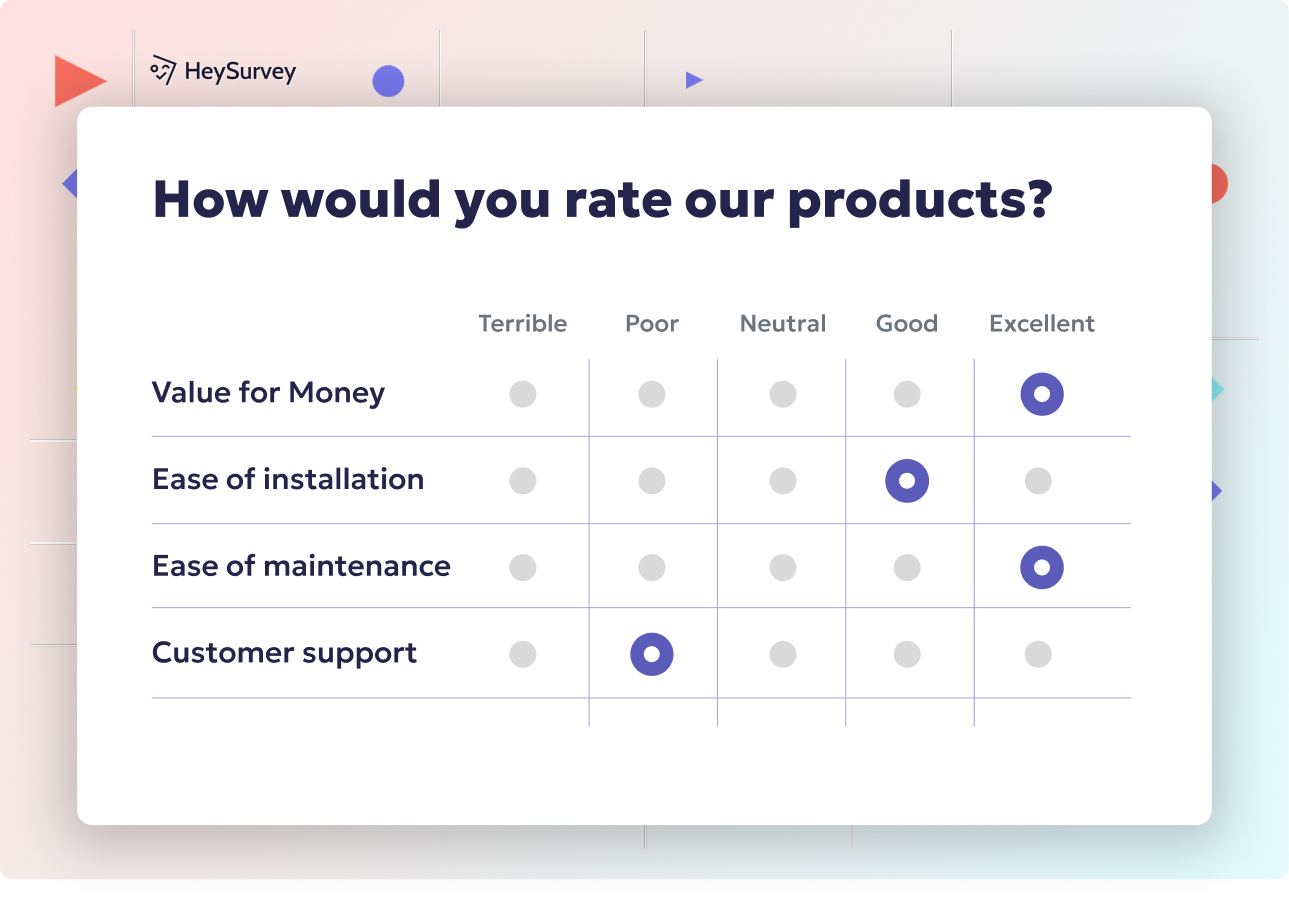29 Retail Survey Questions to Capture Actionable Insights
Discover 28 expertly crafted retail survey questions to capture actionable customer insights and boost satisfaction across every shopping touchpoint.
In the high-stakes world of modern retail, every decision counts and every shopper’s voice has the power to shape strategy. Retail customer feedback has become the lifeblood for brands vying for loyalty and longevity. Asking the right survey questions at the right time uncovers hidden pain points, sparks new ideas, and elevates the entire shopper journey—whether pre-purchase, browsing in-store, filling a cart online, or long after the receipt’s faded. This guide dishes out actionable examples across eight must-use survey types to drive better outcomes for improving store experience, inspiring product tweaks, and mastering the art of shopper happiness.
Customer Satisfaction (CSAT) Surveys
Why & When to Use
If you want to know how happy your shoppers are—right here, right now—customer satisfaction surveys are your superpower. Catching feedback immediately after a purchase (think receipt links at the register or a quick email ping) lets you ride the wave of fresh impressions, both good and not-so-good. This helps you spot trends tied to promotions or seasonal surges, letting you pivot before issues spread.
Measuring product satisfaction survey responses closely following key campaigns tells you what’s resonating and what’s falling flat. These surveys let you quickly:
- See how satisfaction fluctuates on busy vs. slow days
- Link customer happiness to specific staff or events
- Identify repeat complaints or praise to pinpoint root causes
A tightly crafted CSAT survey can help bridge the gap between intention and actual experience, making changes that truly matter. By connecting insights to specific store moments, you unlock strategies for long-term loyalty.
Sample Questions
How satisfied were you with your shopping experience today? (1–5 scale)
Did you find everything you were looking for? (Yes/No + comment)
How likely are you to shop with us again in the next month? (0–10)
Rate the speed of checkout during your visit. (Very slow → Very fast)
What single thing could we improve to earn a 10/10 from you? (Open-ended)
How well did our store layout help you locate products? (Likert)
A study analyzing customer satisfaction surveys from 51 top U.S. retailers found that these surveys often collect inaccurate data and fail to demonstrate active customer listening, with an average score of 43 out of 100 points. (supermarketnews.com)
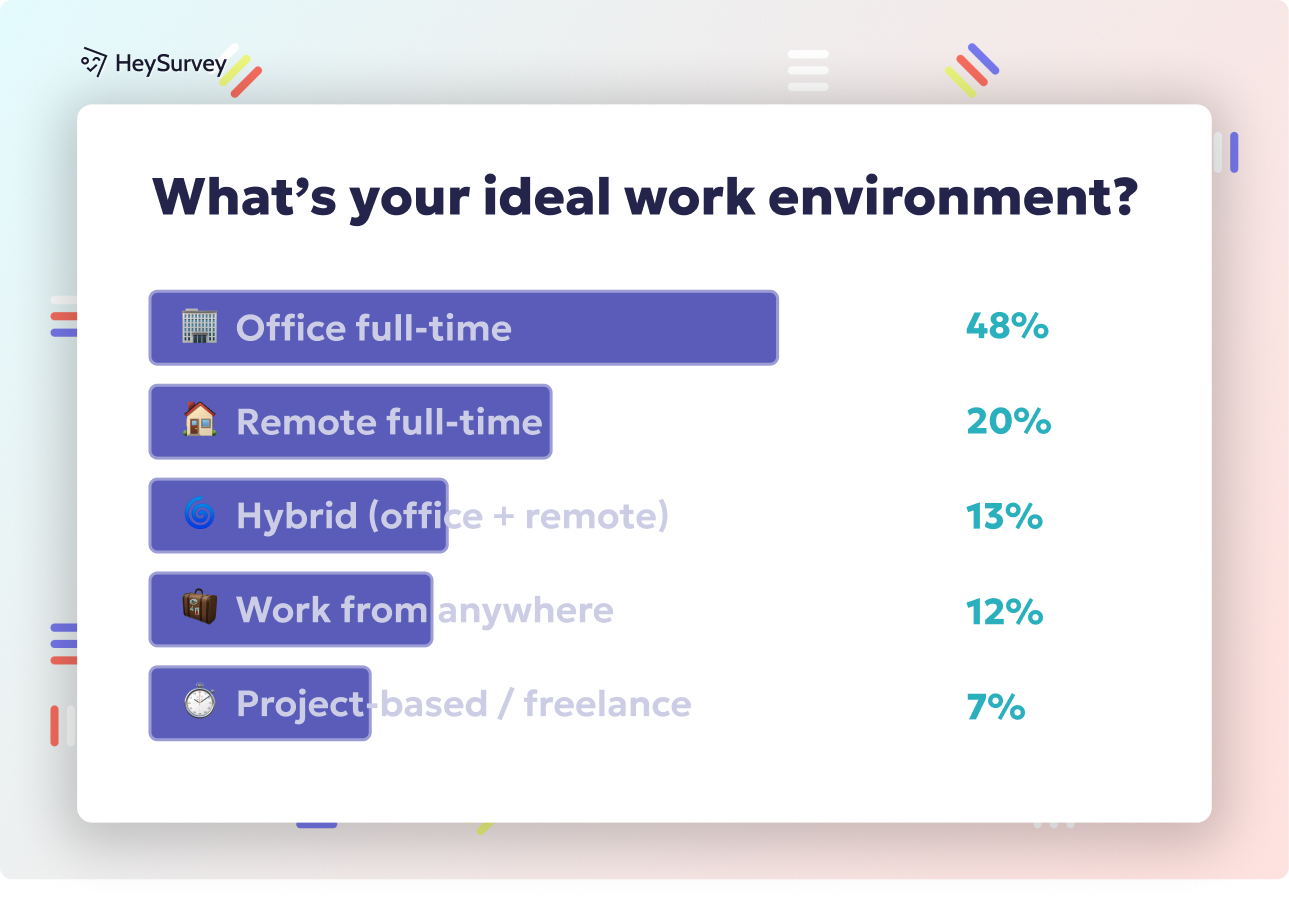
Creating your retail survey with HeySurvey is a breeze—even if you’ve never built one before. Follow these simple steps and you’ll be gathering actionable feedback faster than you can say “customer insights.”
Step 1: Create a New Survey
- Head over to HeySurvey and click Create New Survey.
- You can start from scratch using an empty sheet, but we recommend opening a pre-built template designed for retail surveys (grab the button below this guide).
- Give your survey a friendly name—something like “In-Store Experience Feedback” or “Product Satisfaction Check.”
Step 2: Add Your Questions
- Now it’s time to make your survey your own. Click Add Question to insert question cards.
- Choose from a variety of types like multiple choice, star ratings, Likert scales, or open-ended text fields to capture rich feedback.
- Use the sample questions from this guide to get started quickly or tweak them to fit your store’s voice.
- Make critical questions required to ensure respondents don’t skip the essentials.
Step 3: Publish Your Survey
- Click the Preview button to see how it looks on desktop and mobile—make sure your questions flow nicely!
- When ready, hit Publish and copy your sharable link.
- Share your survey via email, on receipts, or embed it on your website to start collecting valuable data.
Bonus Step 1: Apply Your Branding
- Open the Branding and Designer Sidebar to upload your logo and customize the colors and fonts.
- This makes the survey feel like a natural extension of your store, boosting response confidence.
Bonus Step 2: Define Settings
- Set start/end dates to control when your survey is live.
- Limit total responses if you want to cap your feedback campaign.
- Add a redirect URL so customers land on a thank-you page, website, or special offer after submitting.
Bonus Step 3: Add Branching Logic
- Use branching to customize question flows based on how customers answer—skip irrelevant questions to keep it short and sweet.
- For example, if someone says they didn’t find what they wanted, route them to a detailed question about missing products.
Ready to put these steps into action? Just click the button below to open a retail survey template and start customizing in HeySurvey today!
Product Feedback Surveys
Why & When to Use
When it comes to product satisfaction survey tactics, the magic is in the details. Every package, SKU, or demo is an opportunity to learn about what’s winning hearts and what’s collecting dust. Use short surveys or QR codes on packaging right after purchase, or a follow-up in their inbox—striking while the memory is hot.
You’ll discover which features earn cheers, which inspire cringes, and which competitors are being eyed. These surveys provide critical data for:
- Inventory planning: Know when to double-down or trim back
- New Product Development: Crowdsource next-best flavors or styles
- Competitive analysis: Reveal where your product exceeds or lags rivals
Getting granular with feedback stokes excitement in loyal fans and guides your next big product win. These responses drive tweaks that keep improving store experience over time.
Sample Questions
How would you rate the quality of the product you purchased? (Stars)
Which feature is most valuable to you? (Multiple choice)
Did the product meet, exceed, or fall below your expectations?
What additional flavors/styles would you like to see? (Open text)
How does this product compare to alternatives you’ve tried? (Better/Same/Worse)
Soliciting positive, open-ended feedback at the beginning of customer surveys can significantly boost repeat business beyond the mere solicitation effect. (kellercenter.hankamer.baylor.edu)
In-Store Experience Surveys
Why & When to Use
Walking into a store should feel inviting, intuitive, and completely stress-free. When it isn’t, in-store experience surveys light up exactly where the magic fizzled. By sending a short push after a Wi-Fi login, or giving shoppers a quick tap-and-go exit poll on a store tablet, you collect direct clues for improving store experience every day.
These surveys help diagnose:
- Confusing or cluttered layout
- Murky signage or hard-to-find deals
- Cleanliness and ambiance issues
- Parking pain or unexpected delays
It’s like giving your entire retail floor a tune-up with real-time customer advice. Happy customers mean longer visits, bigger baskets, and more glowing word-of-mouth.
Sample Questions
How easy was it to navigate our aisles?
Rate the cleanliness of the store today.
Were promotional displays clearly visible?
Did background music enhance or detract from your experience?
How long did you spend looking for a parking spot?
Staff Interaction & Service Surveys
Why & When to Use
Ask any loyal shopper their secret, and odds are good it’s the people, not just the products. Staff interaction and service surveys dig deep into the human side of retail, tracking if your employees are winning hearts—or perhaps in need of some extra coaching.
Deploy these after personal shopping help, curbside pickup, or when you want to know if your all-star team is delivering. Expect feedback on:
- Associate expertise and demeanor
- Friendliness and willingness to help
- How valued and understood customers feel
- Smoothness of checkout or pickup service
Insights here are fuel for better training and staff motivation, turning every interaction into pure gold for retail customer feedback.
Sample Questions
Was a team member available when you needed help?
How knowledgeable was the associate about the product?
Did our staff make you feel valued?
Rate the professionalism of the checkout staff.
What could our team have done better?
Research indicates that customer satisfaction surveys can enhance customer perceptions of service quality, but may also lead to delayed repeat business. (strategy-business.com)
Pricing & Value Perception Surveys
Why & When to Use
Price tags are tiny, but the impact they have on shopper choices is massive. Pricing and value perception surveys ask if your prices feel fair, competitive, and right for your audience. Use them right after big promotions, pricing remodels, or when a new rival pops up down the block.
Not only do you learn if your deals are working, but you can also:
- Spot points where value perception breaks down
- Test out new discount thresholds or bundle incentives
- Find out what shoppers secretly wish you’d price lower (without slashing blindly)
A regular pulse on value perception means you’re tuned in—not tone-deaf—on what keeps carts filled.
Sample Questions
How would you rate the value for money of your purchase?
Did current promotions influence your decision to buy?
At what price point would this product feel too expensive? (Van Westendorp)
How do our prices compare to other retailers you visit?
What discount level would motivate you to buy again?
Loyalty & Repeat Purchase Intent Surveys
Why & When to Use
Turning a shopper into a diehard fan (you know, the ones who brag about your store to strangers in line) is the dream. Loyalty and repeat purchase intent surveys let you measure what’s clicking with your best customers—and what’s making some of them ghost you.
Dropping this survey a month or two after a purchase, or tucking it into a loyalty-card statement, lets you zero in on:
- How likely shoppers are to re-choose you—and why
- What perks or benefits actually impress, not just clutter their wallet
- Churn warning signs before they become permanent
These insights guide you in perfecting loyalty rewards and keeping your A-list audience engaged for the long run.
Sample Questions
How likely are you to recommend our store to a friend? (NPS 0–10)
Which benefits would make our loyalty program more valuable to you?
How often do you shop for this product category?
What would encourage you to choose us over competitors next time?
Which channels (in-store, online, app) do you prefer for future purchases?
Omnichannel & Digital Experience Surveys
Why & When to Use
The shopper of today leaps seamlessly from browsing on their phone to curbside pickup, and expects everything—inventory, info, service—to flow effortlessly. Omnichannel and digital experience surveys ensure your online, app, and in-store touchpoints are truly connected.
Send these right after a BOPIS (buy online, pick up in store) event or post-mobile checkout to discover:
- Where digital and store journeys mesh (or crash)
- If online product info is clear and complete
- Whether app navigation or speed trips up the experience
- How accurate real-time inventory reports truly are
Each response is a pixel in a big-picture strategy for unbeatable convenience (and a serious competitive edge).
Sample Questions
How seamless was your transition from online browsing to in-store pickup?
Did our website provide enough product information?
Rate the ease of navigating our mobile app.
Were real-time inventory levels accurate?
How likely are you to use curbside pickup again?
Best Practices & Dos and Don’ts for Retail Surveys
Following best practices for retail surveys is the secret to turning data into action—not just another dashboard full of numbers. Start with a crystal-clear goal. Mixing closed scores (the numbers) with open comments (the stories) delivers a rich picture, while keeping things snappy ensures you’re not sending customers running for the exit.
- Define the survey's objective before drafting your first question
- Use both closed and open-ended questions for depth and quantifiable feedback
- Aim to keep surveys under 5 minutes (brevity wins hearts and higher completion)
- Limit email/SMS frequency—no one likes a daily barrage
- Slash out double-barreled or leading questions
- Test subject lines and incentives to increase your response rate
- Always let respondents know how their feedback drove change
Remember: a great survey is a conversation, not an interrogation. Treat your customers’ time and voice like the gold standard—because it is.
When you master the art of listening—strategically and with a dash of charm—you unlock the secret weapon of modern retail. Smart, well-timed surveys turn everyday feedback into a roadmap for delight, loyalty, and growth. Your happiest customers will tell their friends, and the rest will tell you exactly how to win them over next time. Make every answer count!
Related Customer Survey Surveys
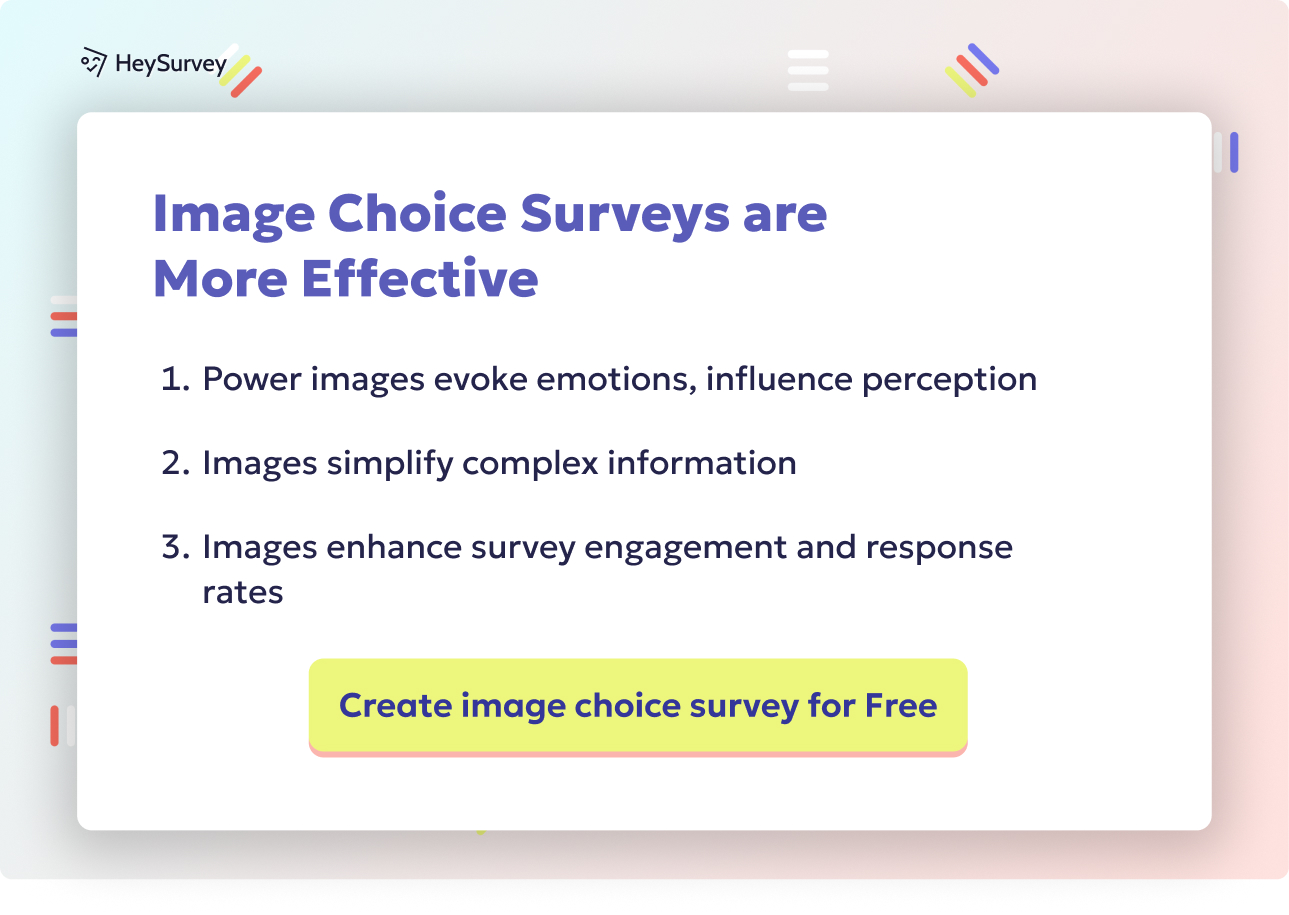
28 Restaurant Survey Questions to Boost Guest Satisfaction
Discover 28 insightful restaurant survey questions to improve guest experience, boost loyalty, an...
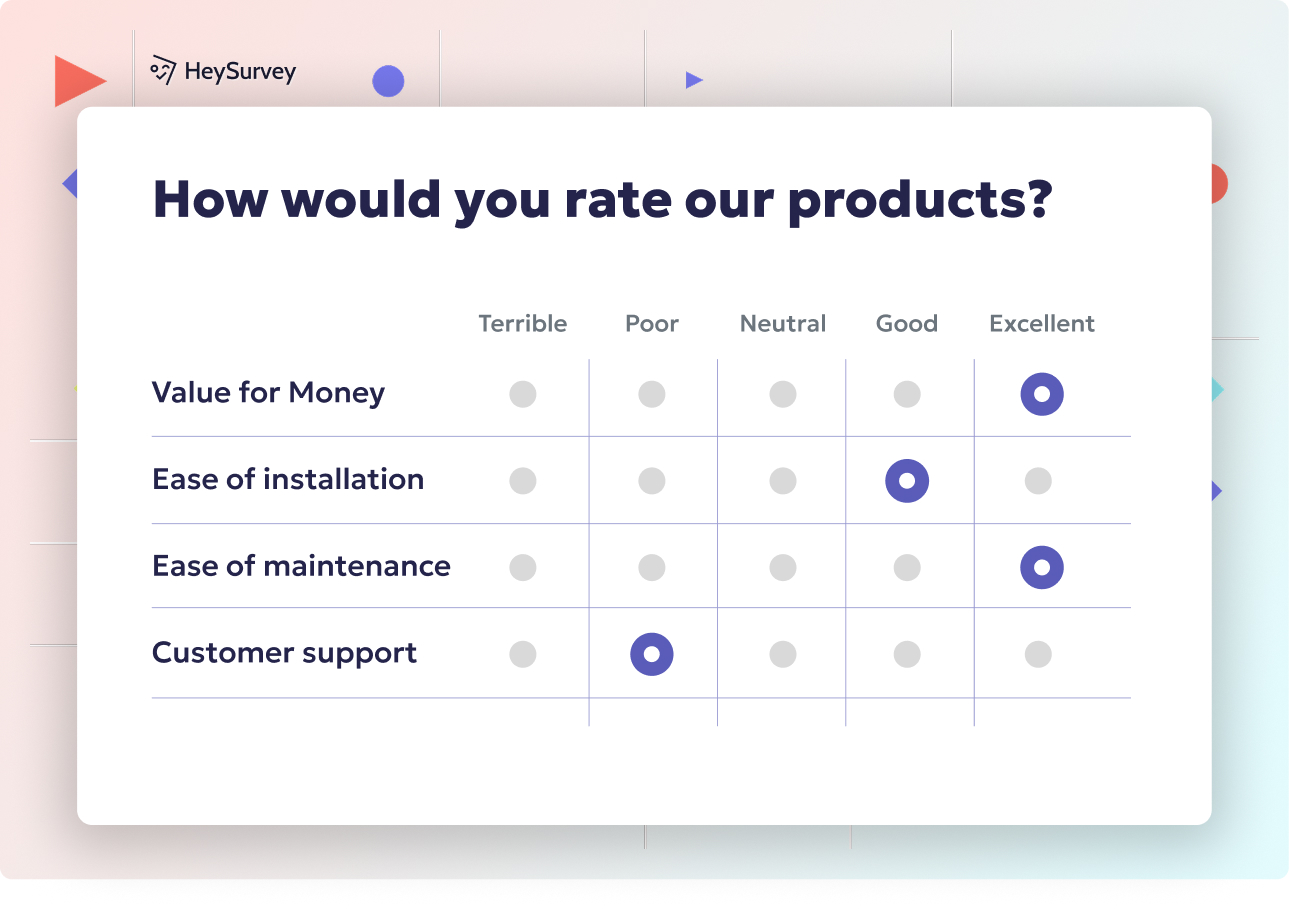
31 Interior Design Survey Questions: Types, Use & Examples
Discover 28 expert interior design survey questions covering preferences, style, budget, and more...
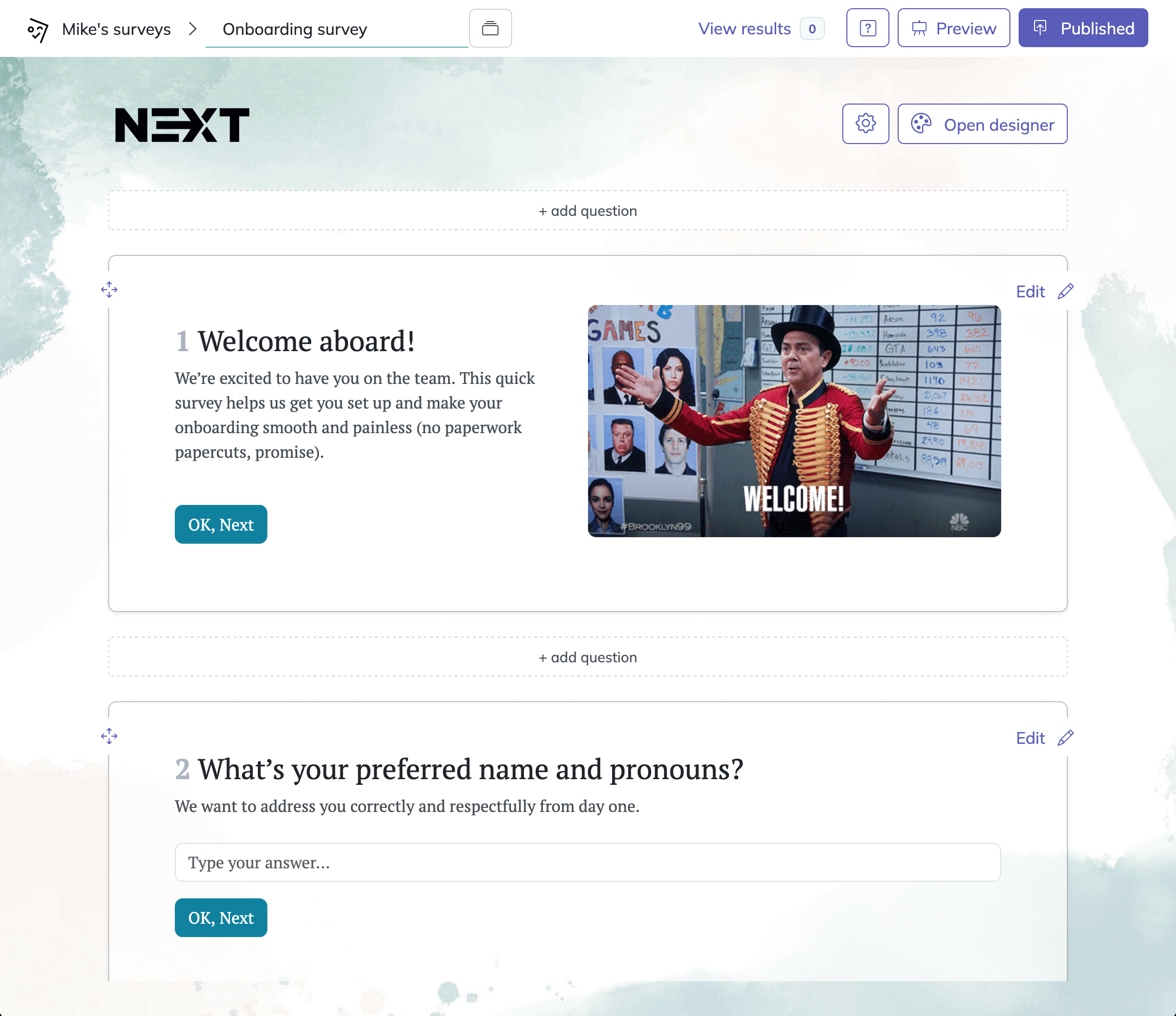
31 Essential Help Desk Survey Questions to Boost Support Success
Discover 30+ effective help desk survey questions with detailed examples to boost IT support feed...

